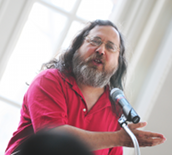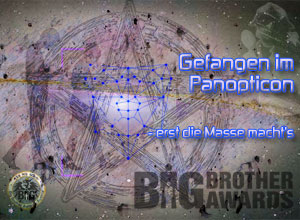

|
search / subscribe / upload / contact |
|
|
||
|
|
||
|
|
||
|
|
||
|
|
||
|
|
||
|
|
||
|
|
||
| RSS-Feed Depeschen | ||

|
||
Date: 1999-07-17
UK: Echelon/site gefilmt-.-. --.- -.-. --.- -.-. --.- -.-. --.- -.-. --.- -.-. --.- birtische Verteidigungsministerium jahrelang den zivilen Telefonverkehr von und nach Irland systematisch abgehört. Ein Team von Channel 4 hat in den Abhör/tower direkt hineingefilmt und unter anderem Galsfiber/equipment von British Telekom gefilmt. -.-. --.- -.-. --.- -.-. --.- -.-. --.- -.-. --.- -.-. --.- relayed by die@die.com via crisp@rambus.com via cypherpunks@toad.com HOW BRITAIN EAVESDROPPED ON DUBLIN THE MINISTRY of Defence "Electronic Test Facility", a rather mysterious 150-ft high tower stands isolated in a British Nuclear Fuels Limited site at Capenhurst, Cheshire. Locals knew that the tower housed a dark secret but did not know what it was. That secret is now out. The tower was craftily erected between two BT microwave radio towers carrying telephone traffic. The ETF was the ideal place to discreetly intercept international telephone calls of the Irish government, businessmen and those of suspected of involvement with IRA terrorism. Channel 4 filmed extensive BT equipment inside the building, including optical fibre cables linking the tower to the MoD's communication system. The hi-tech white ETF tower included eight floors of advanced electronic equipment and three floors of aerial galleries. These were used to extract and sort the thousands of communications passing through every hour. Fax messages, e-mails, telexes and data communications were automatically sorted by computers scanning their contents for key words and subjects of interest. Telephone calls could be targeted according to the numbers dialled or by identifying the voice of the speaker. At the time the tower first came into operation the IRA campaigns were raging. Relations between the British and Irish government's were not always smooth, with the British suspecting their Irish counterparts of being sympathetic to the IRA. Since the early 1990s, the British electronic spy agency GCHQ and its American counterpart NSA have developed sophisticated libraries of voice profiles to use in scanning international telephone messages. The ETF tower was operated by personnel from an RAF unit based in Malvern, Worcestershire. The "special signals" section of the RAF "Radio Introduction Unit" install and run projects for GCHQ. According to local residents, the site was manned 24 hours a day by a team of two to three people, until the start of 1998. Besides the Capenhurst tower, communications to and from the Irish Republic were also intercepted at a similar but smaller GCHQ station in County Armagh. This intercepts microwave radio and other links between Dublin and Belfast. A third GCHQ station at Bude, Cornwall, intercepts western satellite communications, including to and from Ireland. >From 1990 until 1998 the Capenhurst ETF tower intercepted the international communications of the Irish Republic crossing from Dublin to Anglesey on a newly installed optical fibre submarine cable, called UK-Ireland 1. >From Anglesey, the signals were carried across Britain on British Telecom's network of microwave radio relay towers, centred on the BT Tower in London. The key link, from Holyhead in Anglesey to Manchester, passes directly over the Wirral peninsula to the south of Birkenhead. The ETF tower was built to pop up into this beam. When the new cable was planned in the mid 1980s, intelligence specialists at the Defence Ministry and GCHQ Cheltenham, the electronic spying headquarters, realised that the radio beams passed directly over the nuclear processing plant at Capenhurst. During 1988, a temporary interception system was built on the roof of the BNFL factory. When tests of the Irish interception system proved successful, intelligence chiefs decided to go ahead with a full-scale system. Within the Defence Ministry, the project was classified "Top Secret Umbra". The codeword Umbra is used to designate sensitive signals intelligence operations. Not even BNFL, on whose land the ETF tower was built, was let into the secret. The Ministry of Defence held a meeting with residents early in 1989 and urged them not to talk about the site. In return, they were given free fencing and double glazing. The architects were told that the tower had to contain three floors of aerial galleries, each with four special "dielectric" windows. These are opaque to visible light, but allow radio beams to enter. By building the tower in this way, no-one could see what aerials were inside, or where they were pointing. But the architects' plans, lodged at the local authority offices, revealed the true purpose of the tower. The plans revealed that the radio transparent windows had to be aligned on an extremely precise compass bearing of 201.12 degrees to magnetic north. Aerials pointing through these windows would point precisely at the British Telecom towers at Gwaenysgor, Clwyd, and Pale Heights, near Chester. These are the towers carrying the Ireland's international communications links through Britain. During installation in 1989 and 1990, defence officials were concerned to conceal what was going into the tower. To disguise it, contractors vans were repainted in the livery of BT and other public utilities. BT refused to say whether this had been done with their knowledge and consent. Since the Irish telecommunication moved onto a different system over a year the Capenhurst tower has been made redundant. The Ministry of Defence are trying sell it off. It would not make a very comfortable home and it is hard to see what legitimate business might now be interested. The Defence Estate organisation said this week that it had extended the time for offers to be made. It would accepts bids for the tower up to midday today. The Home Office said: "In accordance with standard practice, the Government does not comment on alleged interception activity." BT said it did not wish to comment. The Irish government said it would comment later. History of the Eavesdropping Agency THE BRITISH Government's eavesdropping agency, the Government Communications Headquarters (GCHQ), is based in Cheltenham. It was set up 1946 after the success of the Government Code and Cipher School in Bletchley of cracking the German Enigma codes during the Second World War. It is responsible for monitoring telecommunications and telephone calls in Britain and around the world and employs some 4,000 people. It works closely with MI6. GCHQ uses state-of-the-art equipment for a wide range of operations to decrypt diplomatic traffic and to identify the voices of individuals who are of interest to the West's intelligence services. GCHQ officers have been closely involved in the British efforts to tackle the IRA. GCHQ also works closely with the US eavesdropping operation, the National Security Agency. The agencies work together on a system called "Echelon", an intergrated global surveillance network intercepting international satellite and communications links. It is said to have benefited the US and UK with information about arms and trade deals. Until 1975 few people outside the intelligence community knew about the existence of GCHQ. In the Eighties, Margaret Thatcher took union rights away from GCHQ staff on the basis that trade unionists were a potential threat to national security. Those rights have now been restored. After the Cold War, GCHQ cut back on staff numbers. The Cheltenham headquarters is being rebuilt at a cost of pounds 300m. -.-. --.- -.-. --.- -.-. --.- -.-. --.- -.-. --.- -.-. --.- - -.-. --.- -.-. --.- -.-. --.- -.-. --.- -.-. --.- -.-. --.- edited by published on: 1999-07-17 comments to office@quintessenz.at subscribe Newsletter - -.-. --.- -.-. --.- -.-. --.- -.-. --.- -.-. --.- -.-. --.- |
|
|
|
| related topiqs | |
| CURRENTLY RUNNING | |
q/Talk 1.Juli: The Danger of Software Users Don't Control

|
|
| !WATCH OUT! | |
bits4free 14.Juli 2011: OpenStreetMap Erfinder Steve Coast live in Wien

|
|

